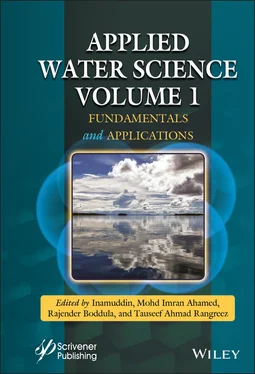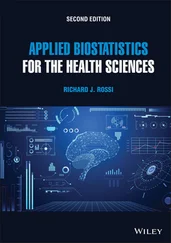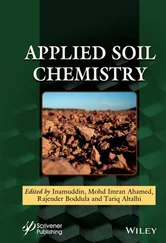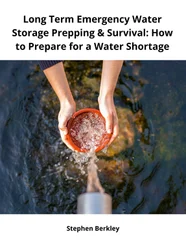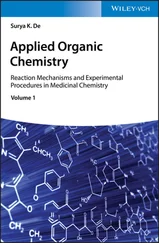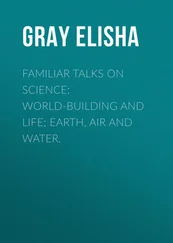91. Olcer, Y.A., Tascon, M., Eroglu, A.E., Boyaci, E., Thin film microextraction: Towards faster and more sensitive microextraction. TrAC Trends Anal. Chem., 113, 93, 2019.
92. Reyes-Garcés, N., Gionfriddo, E., Gómez-Ríos, G.A., Alam, M.N., Boyaci, E., Bojko, B., Singh, V., Grandy, J., Pawliszyn, J., Advances in Solid Phase Microextraction and Perspective on Future Directions. Anal. Chem. , 90, 302, 2018.
93. Mehrani, Z., Ebrahimzadeh, H., Moradi, E., Poly m-aminophenol/nylon 6/graphene oxide electrospun nanofiber as an efficient sorbent for thin film microextraction of phthalate esters in water and milk solutions preserved in baby bottle. J. Chromatogr. A, 1600, 87, 2019.
94. Wang, T., Wang, J., Zhang, C., Yang, Z., Dai, X., Cheng, M., Hou, X., Metal–organic framework MIL-101(Cr) as a sorbent of porous membrane-protected micro-solid-phase extraction for the analysis of six phthalate esters from drinking water: a combination of experimental and computational study. Analyst, 140, 5308, 2015.
95. Lee, M.-R., Lai, F.-Y., Dou, J., Lin, K.-L., Chung, L.-W., (2011) Determination of trace leaching phthalate esters in water and urine from plastic containers by solid-phase microextraction and gas chromatography–mass spectrometry. Anal. Lett., 44, 676, 2011.
96. Zhang, Z.-M., Zhang, H.-H., Li, J.-L., Yang, G.-P., Determination of Phthalic Acid Esters in Seawater and Sediment by Solid-phase Microextraction and Gas Chromatography-Mass Spectrometry. Chinese J. Anal. Chem ., 45, 348, 2017.
* Corresponding author: jhborges@ull.edu.es
2
Occurrence, Human Health Risks, and Removal of Pharmaceuticals in Aqueous Systems: Current Knowledge and Future Perspectives
Willis Gwenzi1,3*, Artwell Kanda2, Concilia Danha3, Norah Muisa-Zikali3 and Nhamo Chaukura4
1Biosystems and Environmental Engineering Research Group, Department of Soil Science and Agricultural Engineering, University of Zimbabwe, Mt. Pleasant, Harare, Zimbabwe
2Department of Environmental Science Bindura University of Science Education, Bindura, Zimbabwe
3Department of Environmental Science and Technology, Chinhoyi University of Technology, Chinhoyi, Zimbabwe
4Department of Physical and Earth Sciences, Sol Plaatje University, Kimberley, South Africa
Abstract
The occurrence of pharmaceuticals and their metabolites in aquatic systems is an emerging human health concern. The current chapter examined existing evidence to address the following objectives: (1) to summarize the nature, sources, and behaviour of pharmaceuticals detected in aquatic system; (2) to highlight human exposure pathways, potential health risks, and removal methods for pharmaceuticals; and (3) to identify knowledge gaps to guide future research. The major classes and sources of pharmaceuticals including, antibiotics, beta-blockers, analgesics, cancer therapeutics, anti-inflammatory drugs, lipid regulators, and endocrine disruptors are highlighted. The behaviour and fate of pharmaceutics in aquatic systems, including dissemination, sorption, biochemical degradation, phase partitioning and uptake and bioaccumulation by aquatic organisms are discussed. Human exposure occurs via ingestion of contaminated water and aquatic foods, inhalation and dermal contact. The emergence of antimicrobial resistance and its potential health effects is the most cited human health risk. However, barring the risk for antimicrobial resistance, the evidence linking pharmaceuticals to human health outcomes remain poor. Some studies even suggest that the human health risks attributable to human exposure to pharmaceuticals are negligible. However, there is need for caution as the human health risks may vary considerably on a case-by case basis. Specifically, the human health risks could be significant in Africa and other developing regions due to several risk factors. These include: (1) the high prevalence of consumption of raw drinking water and aquatic foods from polluted sources; (2) a putative high pharmaceutical pollution associated with intensive use of pharmaceuticals to control the high animal and human disease burden in the tropics; and (3) high abuse and misuse of pharmaceuticals caused by the existence of informal markets and weak and poorly enforced environmental, public health, and medicines regulations. The capacity of conventional and advanced water treatment processes to remove pharmaceutics in aqueous systems is discussed. Finally, future research directions were highlighted to address the lack of comprehensive data on the ecotoxicology, epidemiology, and behaviour and fate of pharmaceuticals in aquatic systems especially in the tropics.
Keywords:Aquatic pollution, behaviour, human exposure, human health risks, removal
Pharmaceuticals refer to a group of chemicals widely used to control of human and animal infections (Daughton and Ternes, 1999), although the term has been recently extended to include illicit or recreational drugs (Fantuzzi et al., 2018). Pharmaceuticals are not a homogenous group of compounds and have unique characteristics including (1) capacity to exist in different crystalline forms (i.e., polymorphism), (2) often large and complex molecular structures, (3) existence of multiple ionizable sites in their molecules, and (4) are predominantly introduced into the environment via anthropogenic sources (Cunningham, 2004; Fatta-Kassinos et al., 2011).
Pharmaceuticals are widely used in both human and animal health; hence, they ubiquitous in the environment (Daughton and Ternes, 1999). Pharmaceuticals are consistent as non-persistent in the environment, but their widespread and continuous use, coupled with low removal in water and wastewater treatment plants, implies that they are continuously released into aquatic systems (Ebele et al., 2017). Therefore, due to their omnipresence, pharmaceuticals are considered as “pseudo-persistent” in the environment, more than even some pesticides (Ebele et al., 2017).
Recently, there has been increasing public and research interest in pharmaceuticals and their metabolites as emerging contaminants (Sorensen et al., 2015; Omar et al., 2016; Gwenzi and Chaukura, 2018). Interest in pharmaceuticals and their metabolites is motivated by their potential human and ecological health risks, and the availability of advanced analytical equipment for their detection and characterization (Gwenzi and Chaukura, 2018). Pharmaceuticals and their metabolites have been detected in aquatic systems in various regions (Verlicchi et al., 2016; Gwenzi and Chaukura, 2018; K’oreje et al., 2019). A number of reviews show that pharmaceuticals have been detected in aquatic systems in almost all continents, including Europe, Asia, Africa, North America, and Australia (Verlicchi et al., 2016; Gwenzi and Chaukura, 2018; K’oreje et al., 2009). For example, in Africa, pharmaceuticals have been investigated and detected in about six countries of the total 54 countries in Africa (K’oreje et al., 2019). The lack of data in the remainder 48 countries does not necessary reflect absence in aquatic systems. Rather, this is indicative of the severe lack of research on the subject caused by lack of funding, expertise, and analytical equipment (Gwenzi and Chaukura, 2018).
The current chapter summarizes the nature, occurrence, behaviour, human health risks, and removal of pharmaceuticals in aquatic systems. The objectives are: (1) to summarize the nature, sources and behaviour of pharmaceuticals detected in aquatic system; (2) to highlight human exposure pathways, potential health risks, and removal methods for pharmaceuticals; and (3) to identify knowledge gaps to guide future research. Figure 2.1 summarizes the focus of the chapter, including the nature, sources, behaviour, human exposure and health risks, and removal of pharmaceuticals in aquatic systems.
Читать дальше
